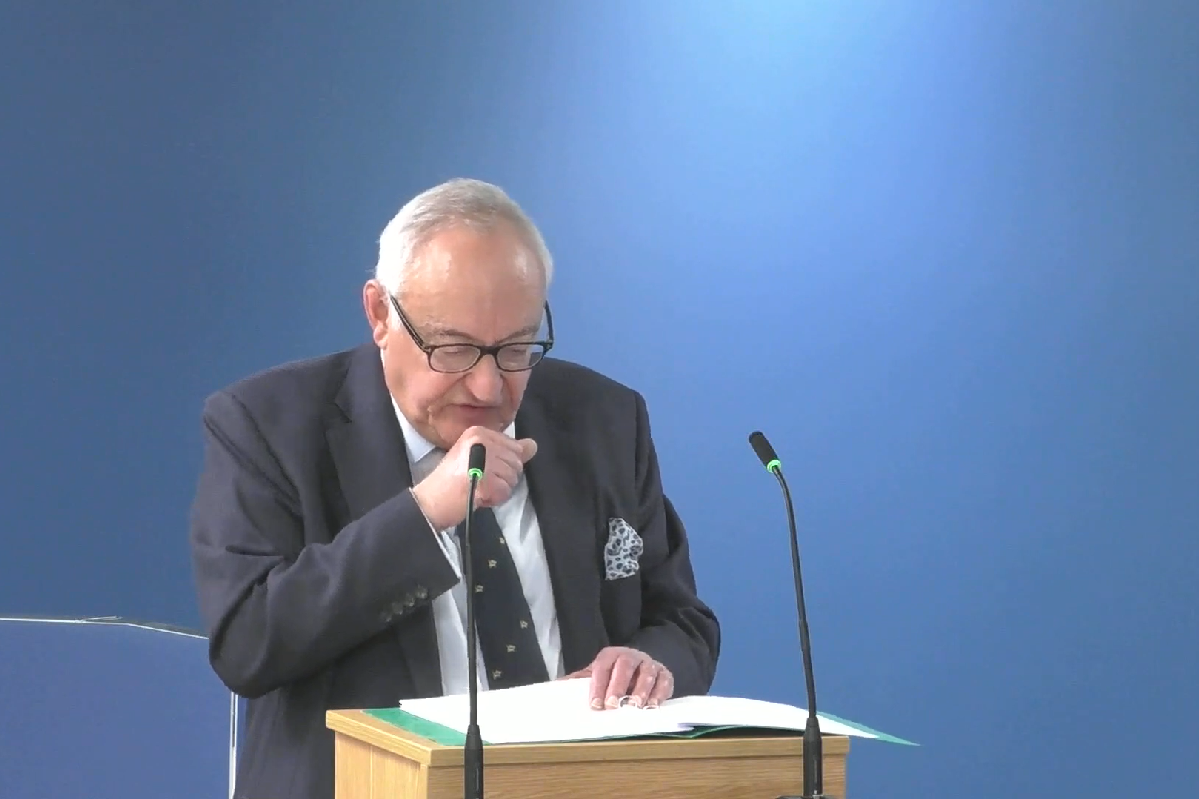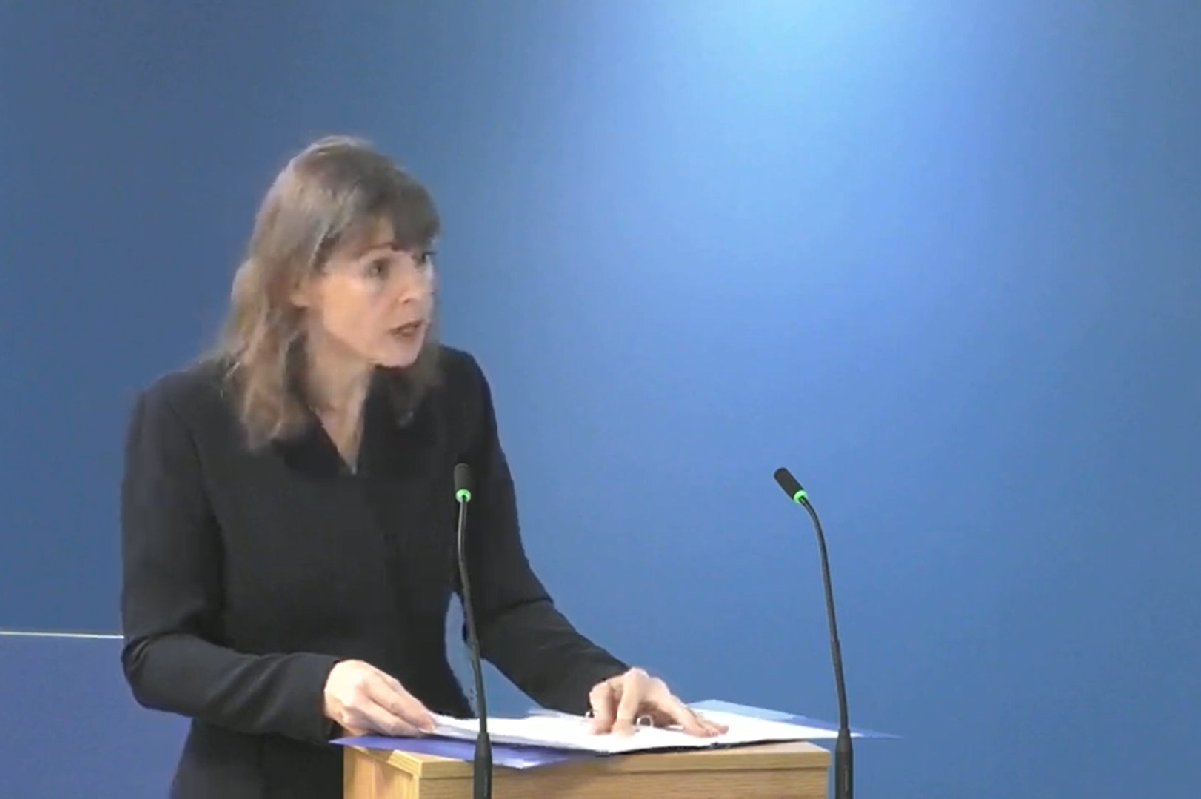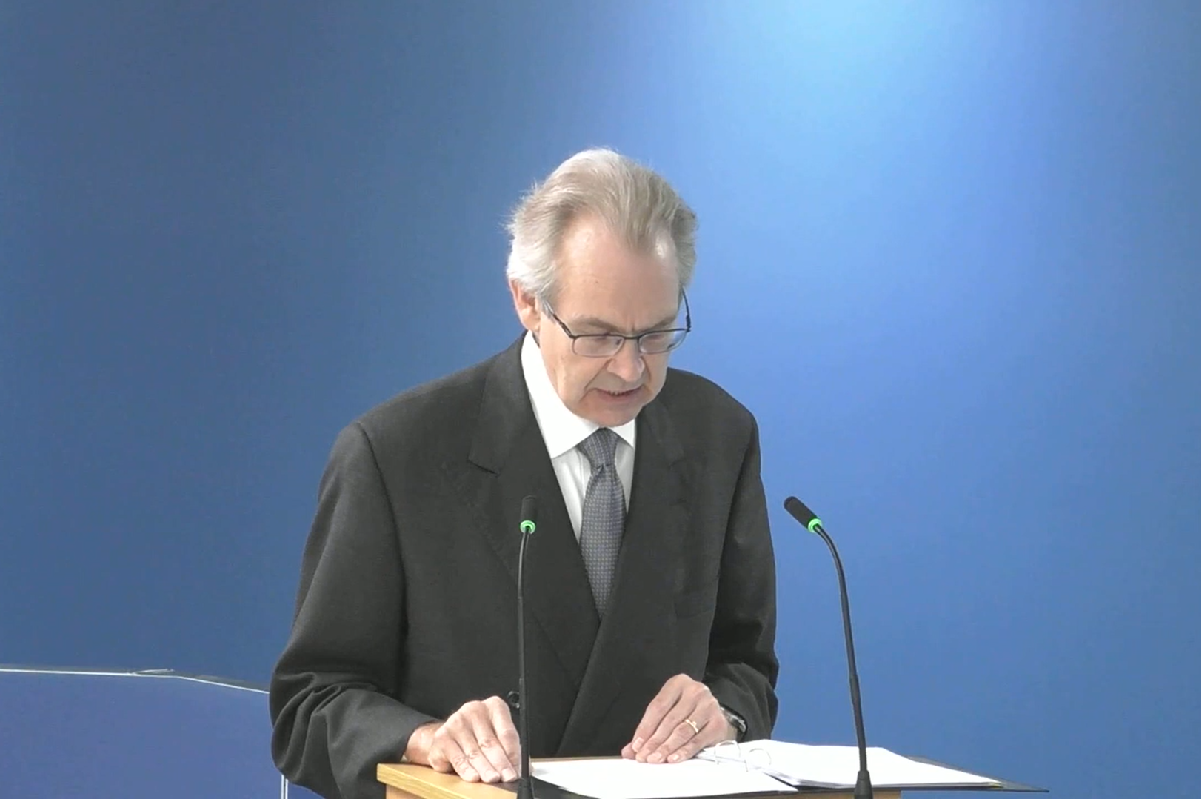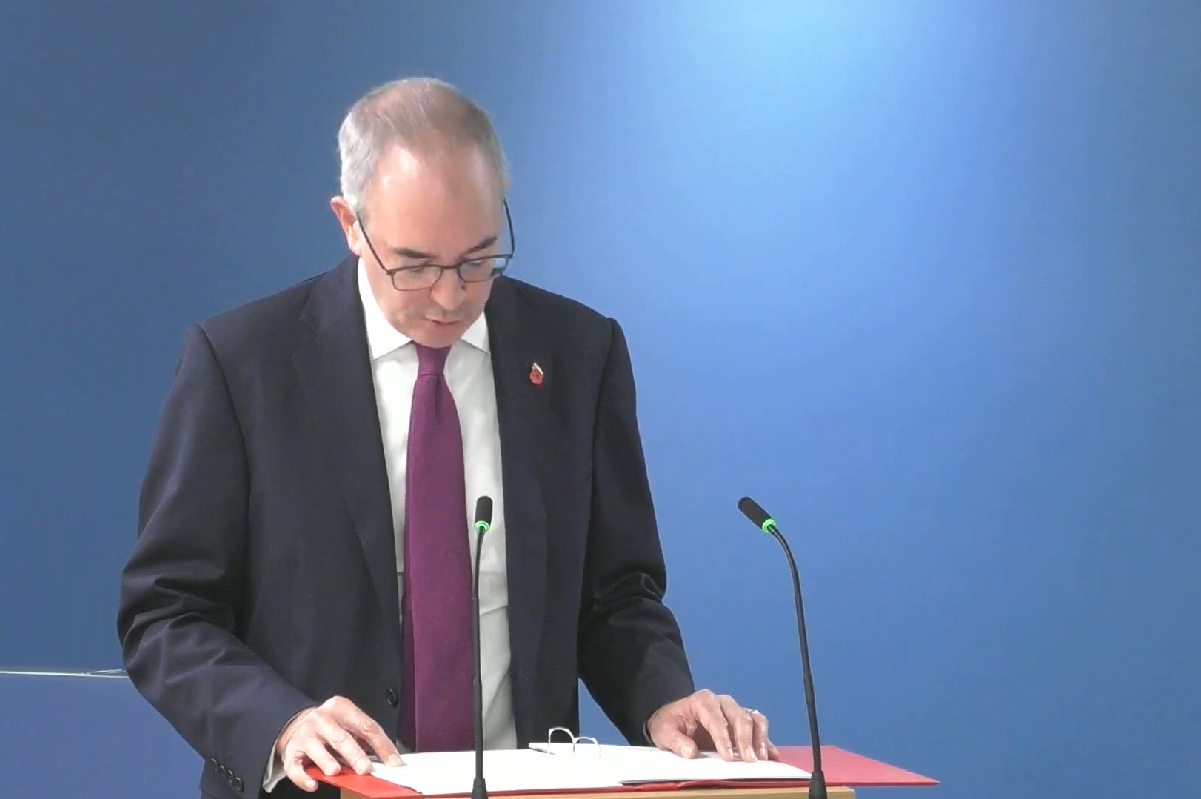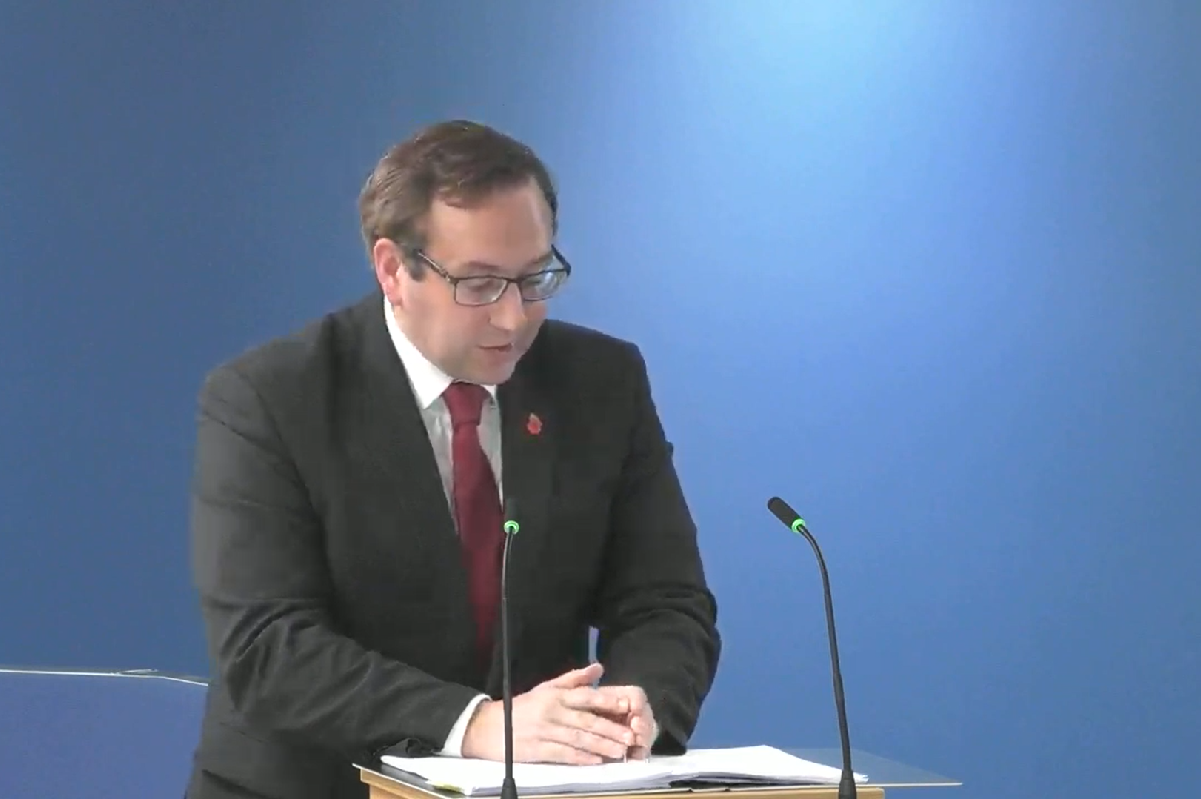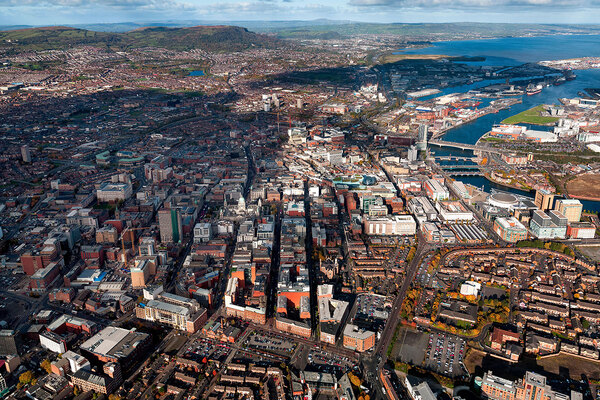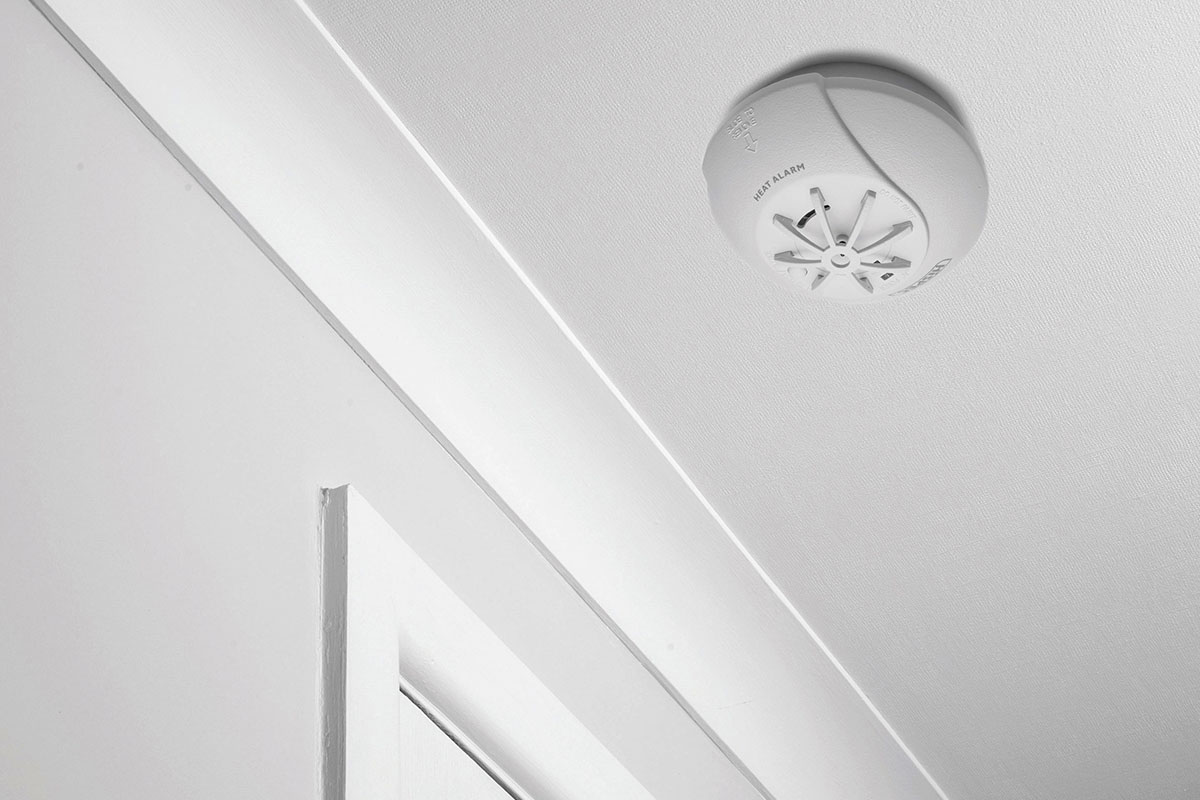Social housing staff under investigation for ‘serious criminal offences’ relating to Grenfell fire
Former staff from the social housing body responsible for the management of Grenfell Tower are being investigated by the police for serious criminal offences relating to the fire, the barrister representing the organisation revealed today.
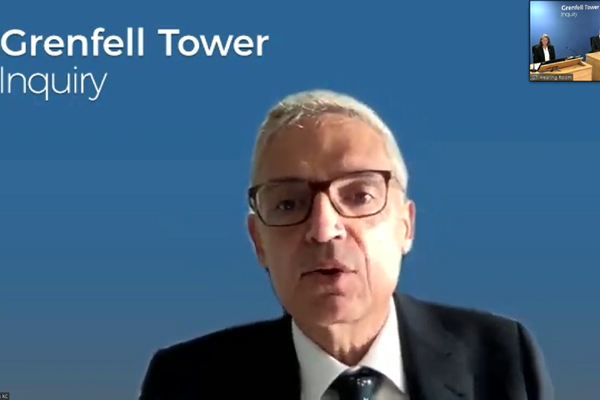
Kensington and Chelsea Tenant Management Organisation (KCTMO), the arm’s-length body owned by the Royal Borough of Kensington and Chelsea (RBKC), was effectively abolished in the aftermath of the Grenfell fire following widespread criticism.
It now exists only as a shell organisation for the purposes of future investigation, managed by new staff and a new board.
James Ageros KC, delivering his closing statement to the Grenfell Tower Inquiry, said that as a result “it is not appropriate for those now employed to express critical judgements about the organisation as it previously was or its employees”.
“This is especially so in the case of a number of individuals in question [who] continue to be investigated by the police for serious criminal offences,” he said.
The Metropolitan Police has a large, ongoing investigation into the Grenfell Tower fire and has previously confirmed it has interviewed 40 individuals under caution for various offences.
But it has not said which of the myriad organisations involved in the refurbishment and management of the tower they came from.
Mr Ageros went on to say the inquiry “would be entitled to conclude” that KCTMO’s former staff were “well-intentioned social housing professionals and none acted with ill will or a reckless attitude towards residents’ health and safety”.
Witnesses from KCTMO were grilled over several issues during the course of the inquiry – including their involvement in a ‘value engineering’ process which saw the originally specified zinc cladding switched for highly combustible aluminium composite material (ACM) panels.
Today, Mr Ageros pointed to the large number of other buildings with cladding of this sort. Almost 500 tall buildings with ACM have been discovered in England since the fire and thousands more have dangerous cladding of other forms.
“We say that these figures cannot be ignored when the inquiry assesses the circumstances in which a block managed by the TMO came to be clad in such dangerous materials,” he said.
“The sheer scale of the cladding crisis supports the proposition that it could have been anybody in the sector… in the light of this it will be wrong to single out the TMO or its employees as being uniquely or egregiously at fault.”
KCTMO witnesses also faced difficult questions about the self-closers on flat entrance doors in the tower.
Many of these legally required devices were missing, which is believed to have been a major factor in the rapid spread of smoke into internal lobbies, a critical factor in preventing many residents from escaping the blaze.
KCTMO and RBKC had been warned before the fire by the London Fire Brigade (LFB) to check and fix self-closers across their housing stock, with a specific ‘deficiency notice’ served on Grenfell Tower in November 2016.
Mr Ageros today said that this was a “widespread problem in the industry that was not merely confined to the TMO or Grenfell Tower” and that other organisations also struggled to deal with it.
Earlier, a barrister representing insulation manufacturer Celotex had claimed the group had “a role in improving competency and culture in the construction industry”, despite its admitted failures in the build-up to the Grenfell Tower fire.
Celotex, owned by global multinational Saint Gobain, made the RS5000 insulation which formed the majority of the insulation in the tower’s cladding system.
The inquiry has previously heard that fire-resisting boards were secretly added to a fire test on a system containing this insulation in May 2014, in order to help secure a pass that was crucial to targeting the insulation for use on high-rise buildings.
These boards were omitted from reports of the test, with Celotex then obtaining a certificate that misleadingly claimed the product was “acceptable for use in buildings above 18m in height” on the strength of the test.
Witnesses who previously worked at the firm have accepted under questioning that this behaviour was “downright misleading”, “intentional” and “dishonest” – with one saying he was made to “lie for commercial gain” at the firm.
Celotex actively targeted sales on high-rise buildings after passing the test, approaching the contractors working on Grenfell Tower and offering a large discount via a third-party supplier. It later enquired about using Grenfell as a “case study” for its product.
Today, Craig Orr KC (pictured above), representing Celotex, reiterated the firm’s admission that the 2014 testing involved “unacceptable conduct on the part of a number of former Celotex employees and should not have occurred”.
He said the discrepancies were discovered by Celotex’s “current management” after the fire, and were swiftly reported to the police, the inquiry and Trading Standards.
He added that the firm has recruited new technical and operations managers since the fire and introduced a new quality assurance process.
“Celotex has sought to play its part in ensuring that this inquiry helps to bring about effective and lasting improvement in the building safety regime and in construction standards. Celotex looks forward to the inquiry’s final report and in continuing its own role in improving competency and culture in the construction industry,” Mr Orr said.
He claimed that the test, which was described by lawyers for bereaved and survivors as “dishonest fabrication” on Monday, had “no causative impact” on the use of the insulation at the tower because “there is no evidence that any construction professional involved in the refurbishment read, let alone relied upon, the description of the test or the tested system”.
A further test, without the additional boards, has been commissioned since the fire and passed.
Mr Orr said this showed that the insulation “could safely be used in a cladding system with a combination of other appropriate materials”.
“The design and compliance of the [cladding system on Grenfell Tower] was the responsibility of the specialist designers, contractors and consultants engaged on the refurbishment,” said Mr Orr.
“Celotex is not an architect, designer, building contractor or fire engineer. It does not design, manufacture, supply or install cladding systems, and it did not do so at Grenfell Tower.”
He claimed that regulations were clear that combustible insulation was banned on high rises, unless it was used as part of a system that had been fully tested or justified by a desktop study.
“Had the construction and building control professionals involved in the refurbishment paid proper regard to the regulatory requirements I’ve outlined, it would have been clear to them that the cladding system designed for Grenfell Tower was not compliant and should be redesigned,” he said.
He added that the insulation “played at most a minor role in the external spread of fire” at the tower.
Like Kingspan, which made a smaller amount of insulation used on the tower, Celotex emphasised testing from an inquiry expert which has suggested that the speed of the fire spread was “driven to an overwhelming extent” by the cladding panels rather than the insulation on the tower’s walls.
He quoted Professor Luke Bisby, who said his tests revealed that the cladding – made by Arconic – was a “uniquely hazardous product that presents extreme fire hazards and should never have been used on building facades”.
“Given the presence of that cladding on the tower, the fire would have spread in materially the same way, whatever insulation was used,” he said.
Lawyers for bereaved and survivors have urged the inquiry to “sup with a very long spoon” when considering these submissions – pointing out that the tests on which they were based are small scale and innovative.
Despite the evidence showing that the spread of flame was likely to have been driven by the cladding, another expert witness has stressed that toxic smoke produced by the fire on the exterior came in “equal amounts” from the cladding and insulation.
The inquiry also heard from James Maxwell-Scott (pictured above), representing RBKC, who said that Celotex had “assiduously courted” the Grenfell Tower refurbishment team to encourage the use of its product.
He said that its sales representative had informed the tower’s cladding sub-contractor in writing that the insulation was suitable for use on a high rise, something he called “wholly misleading”.
“Celotex knew that Grenfell Tower was a high-rise residential building. It knew the attributes and chemical composition of [its insulation]. It should never have targeted the Grenfell Tower project,” he said.
Mr Maxwell-Scott repeated RBKC’s admissions of serious failures within its building control department that resulted in the non-compliant cladding system on the walls of the tower being signed off.
However, he listed 10 key dates in the evidence when other failures contributed to the widespread use of combustible cladding – such as a secret government test from 2001 that revealed its danger.
He said: “The council’s building control service should never have been in this position. It should never have been the case that a single local authority building control service was all that stood between dangerous products being used on Grenfell Tower.”
“It seems clear now, that over many years, the construction industry developed and central government presided over a deeply flawed system,” he said. “You may think for not only was the system deeply flawed, but the corporates working within the system actively sought to take advantage of flaws within it, that there was a culture of gaming the system.”
RBKC, along with KCTMO, was listed in a “rogues gallery” of organisations with particular culpability for the deaths in the fire, presented by lawyers for bereaved and survivors on Monday.
This was primarily due to the failure to act on warnings that self-closers on the doors in the tower were broken or missing – a major feature in the rapid spread of smoke inside the building.
Today, Mr Maxwell-Scott accepted that the council “was wrong” not to take the action recommended by the LFB on this issue.
He went on to claim, however, that the council was not aware of the extent of missing door closers in Grenfell Tower and questioned the work of the tower’s risk assessor, Carl Stokes.
“The residents of Grenfell Tower were failed by many, many organisations from both the private sector and the public sector. The council was one of them,” he said, adding that it “apologises unreservedly” for the way the tower’s residents were treated.
The inquiry also heard from the British Board of Agrement (BBA), a third-party certification firm that provided certificates for the cladding panels used on the tower.
David Sawtell (pictured above), appearing for the firm, said the certificate should not have been used to justify the selection of the cladding for Grenfell Tower, saying that it made clear that other checks were required.
“Certificates are intended for use by specialist trained and qualified designers and specifiers. Their content and format reflect this,” he said.
“A certificate should be used as one part of a larger exercise to determine whether the requirements of the building regulations… will be met in a particular use case.”
He also criticised cladding manufacturer Arconic for failing to disclose serious test failures that occurred before the certificate was produced.
“This was fundamentally misleading. It was in breach of Arconic’s contract with the BBA,” he said.
Yesterday, Arconic’s barrister had argued that its actions were not misleading and called its failure to disclose the test “a non-issue”.
The inquiry continues.
Sign up for our fire safety newsletter
Already have an account? Click here to manage your newsletters
